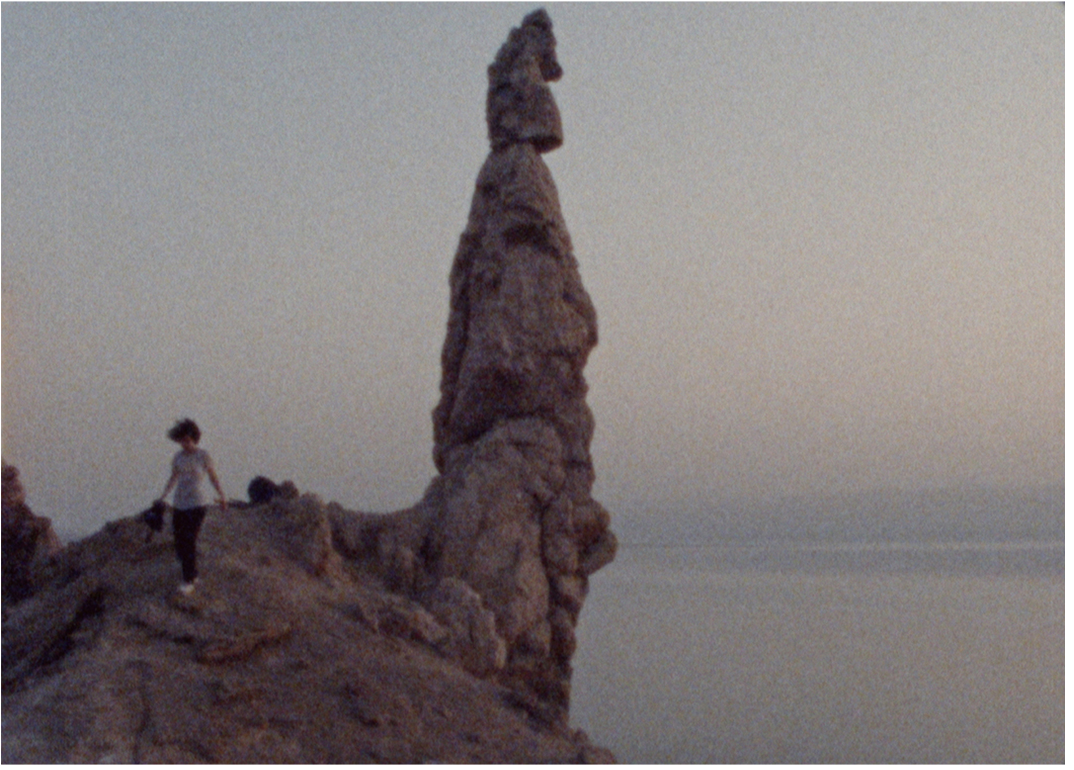I was so pleased to speak with Iranian-Canadian artist Parastoo Anoushahpour for Peripheral Review last year, about her film with Faraz Anoushahpour and Ryan Ferko, entitled The Time That Separates Us. I’m excited to share the piece with you, which you can read in full here. I also recently viewed the group’s newest exhibition at Mercer Union in Toronto, called Lovers’ Wind, which I highly recommend that you see if you’re in the area. It’s on until March 23, 2024.

I can’t say for certain why Parastoo Anoushahpour’s recent film The Time That Separates Us (2022) absorbed my attentions. In the spring, I found myself on the edge of the University of Toronto’s St. George campus in Innis Town Hall, a cinema and lecture theatre. I was compelled to take out my notebook in the dark to record some thoughts: Story of the Ammonites / Lot’s daughters—The key to taking a selfie is to take just one—’Valle’–Yes—There–English—Not everything is meant to be written—All memories become important—A light hand / a Heavy Land.
As part of a 2023 Images Festival screening series called Passages, Anoushahpour’s film was screened alongside the works of Iranian filmmakers Naghmeh Abbasi, Siavash Yazdanmehr, and Rojin Shafiei. Collectively, these works spoke to each other in Arabic and Farsi, between modes and metaphors. I tried to understand the language between them. Shot in Jordan and Palestine, The Time That Separates Us is grounded in the land and the mythologies around Lot’s Wife and the Pillar of Salt. In the film, an intimacy of thoughtful and honest intentions is foregrounded in the exploration of the film’s subjectivities in a heavily mediated landscape.
A couple of weeks after the screening, during a trip to New York City, I reached out to Anoushahpour to ask if she would be open to talking about her work. The Toronto-based filmmaker and artist spoke with me from Athens, Greece, where she was at the time. Our conversation meandered between ideas I had sent her in an email, and we spoke about elements of craft and process—not in a way that would explain certain artistic decisions or meanings, but to more insightfully navigate why I came away feeling so touched by her work.
Anqi Shen: My immediate response to your film was that its strength lay in the attention given to the unreliability of narrative. I found the graininess at the beginning really satisfying, it just felt so aesthetically beautiful. If there was one word I would use to describe the film, it would probably be “unprecious.” Is that how you see it as well?
Parastoo Anoushahpour: No, that isn’t a word that comes to mind, but I really like it. I think in some ways, some elements of it are being treated to feel unprecious as opposed to how they’re usually treated—certain narratives that have power and are very rooted in the culture and the landscape—they’re untouchable somehow, and I guess unprecious and untouchable can switch.
AS: I think what I mean by “unprecious” is that it didn’t seem that everything was pristinely put together. The film came across as personal, and I’m not saying craft wasn’t involved…
PA: Maybe it’s “unprecious” as opposed to that element of control that comes with craft and goes with a certain kind of narrative. There is a level of giving up control in a way that things come together. It takes you out, it breaks the thing it is trying to say. But I like “unprecious.” For me personally, it was a lot about control, and also even practicing a level of looseness that I don’t usually do in my work with my collective—with Faraz Anoushahpour and Ryan Ferko—we’ve been working together for almost a decade.
Because of the content and form I was working with for this film, it was important to try to find the balance in keeping the responsibility or authority in stringing these versions of narratives along, even though a lot of the texts and the voices that write some of those texts are people I collaborated with over a long time and they’re very much involved in guiding the direction. Those relationships are important to me, so it was about finding a way to keep that precious, and let that guide the image.
[…]

Leave a comment